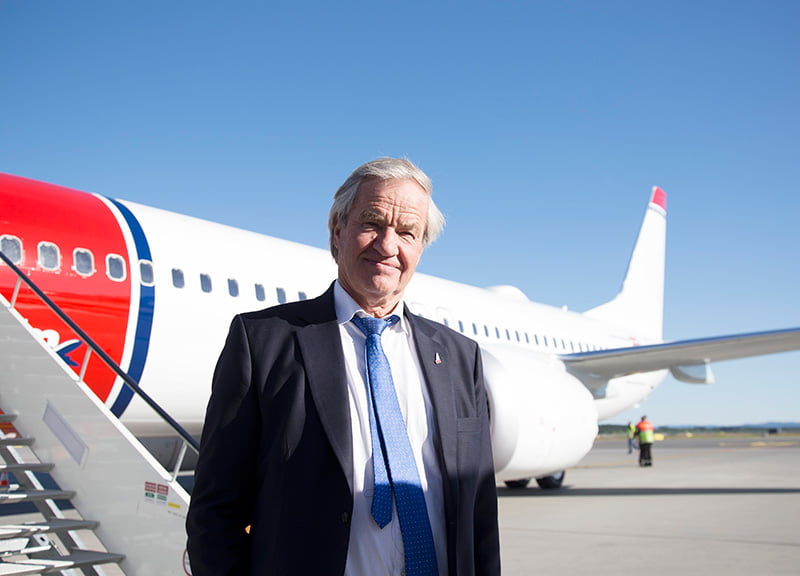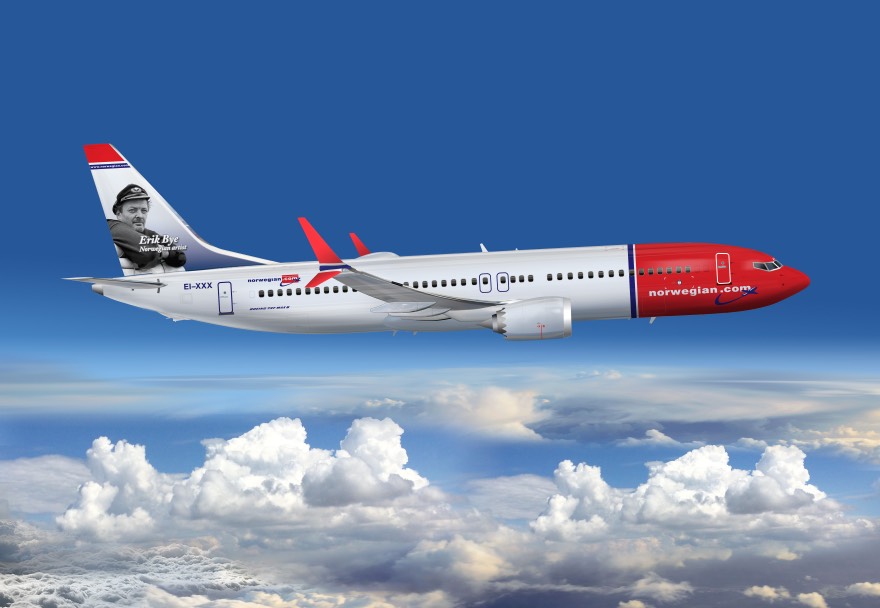
One of the aviation industry's biggest ever disrupters has finally stepped aside at the age of 72. Whats's next for Norwegian?
It is without doubt the end of an era as Bjørn Kjos stands aside as CEO of Norwegian. Under Kjos' 17-year leadership, the small domestic airline grew to become one of the world's most famous carriers with its budget approach to transatlantic air travel.
At the age of 72, Kjos was one of the oldest corporate leaders in Europe.”I am way overdue,” said Kjos on the quarterly earnings call as he announced his retirement. He won't be disappearing from aviation completely, however. He'll be staying on for the time being as an advisor to the Chairman of the Board. First on the agenda? His replacement.
Read more: Earn free flights with Norwegian
In the short-term, Geir Karlsen has been appointed interim CEO. Moving across from his role as CFO, Karlsen will likely be seen as a “safe pair of hands”. Given the state of Norwegian's finances right now, that's likely to win the trust of the markets.
Was aggressive growth the right strategy?
Norwegian has come almost from nowhere to carry about 38 million passengers every year. Its biggest source of revenue is American fliers who are shunning the legacy carriers to fly to Europe on Norwegian. The airline has also launched routes from Europe to Asia and South America, and has recently started domestic operations in Argentina.
However, industry commentators are split about whether Kjos' obsessive push for growth was the right strategy. The huge investment in a brand new fleet of planes and new long-haul route network with bases all around the world nearly bankrupt the company.

The company has NOK 61 billion ($7.1 billion) of net debt and lease liabilities, yet its profits are slim. The company was forced to raise NOK 3 billion kroner of fresh capital in January, and the share price has fallen 80% from their peak in 2015.
From fighter pilot to corporate disrupter
Born in Ringerike in 1946, Kjos grew up with aviation. His father bought a Piper Cub light aircraft and started the airline Norsk Skogbruksfly. Kjos trained at the Norwegian Air Force Academy, going on to fly the Lockheed F-104 Starfighter and Northrop F-5.
Following the bankruptcy of a small charter airline, Kjos along with several others started Norwegian Air Shuttle in 1993. Originaly the airline used Fokker 50 to fly regional routes in western Norway. Kjos chaired the company for the first three years.
In 2002, he took on the role of CEO and began transforming the company into a low-cost airline operating on Norwegian domestic routes.
What's next for Norwegian?
Many in the industry doubted Norwegian's model of aggressive growth was sustainable, and so it proved. The company has done well to stave off bankruptcy, especially given the grounding of 18 of its newest planes earlier this year. Boeing and Norwegian are yet to agree compensation over the 787 Max aircraft.

The company has long been subject to rumours of a takeover. Cynics may say the movement of a “money man” into the CEO position makes that scenario much more likely. IAG, the owners of British Airways, acquired a 4.6 percent holding in Norwegian in 2018 and has long been thought to want a full takeover.
Another possible buyer could be the Lufthansa group. Senior management there are known to be very interested both in Norwegian’s transatlantic route network and the modern fleet of Boeing 787 Dreamliners.
Of course, just as likely is that Norwegian continues on. Kjos recently switched strategies from growth to profitability. The airline has announced the closure of several long-haul routes and more similar changes could be on the horizon.

